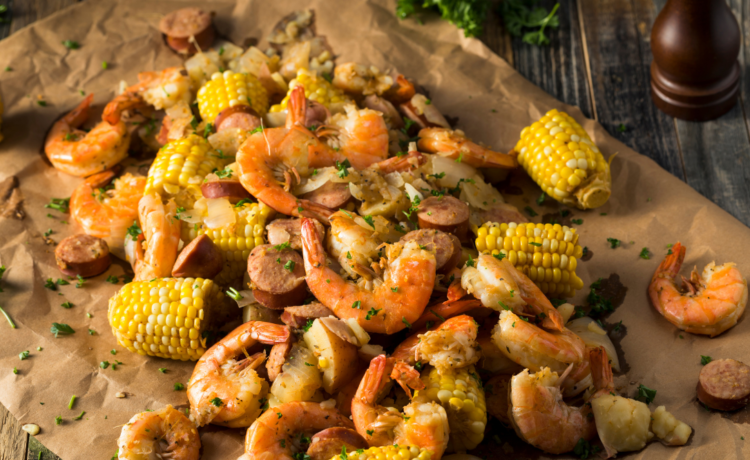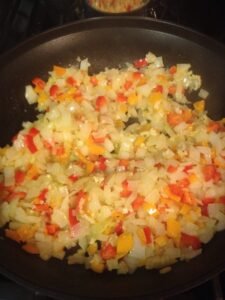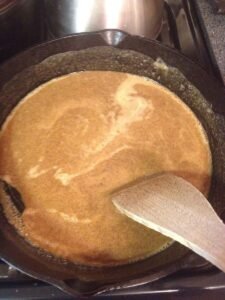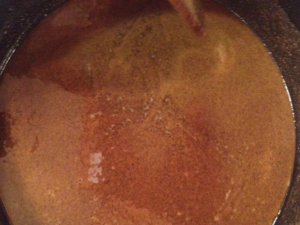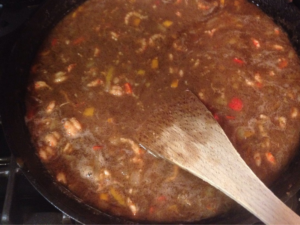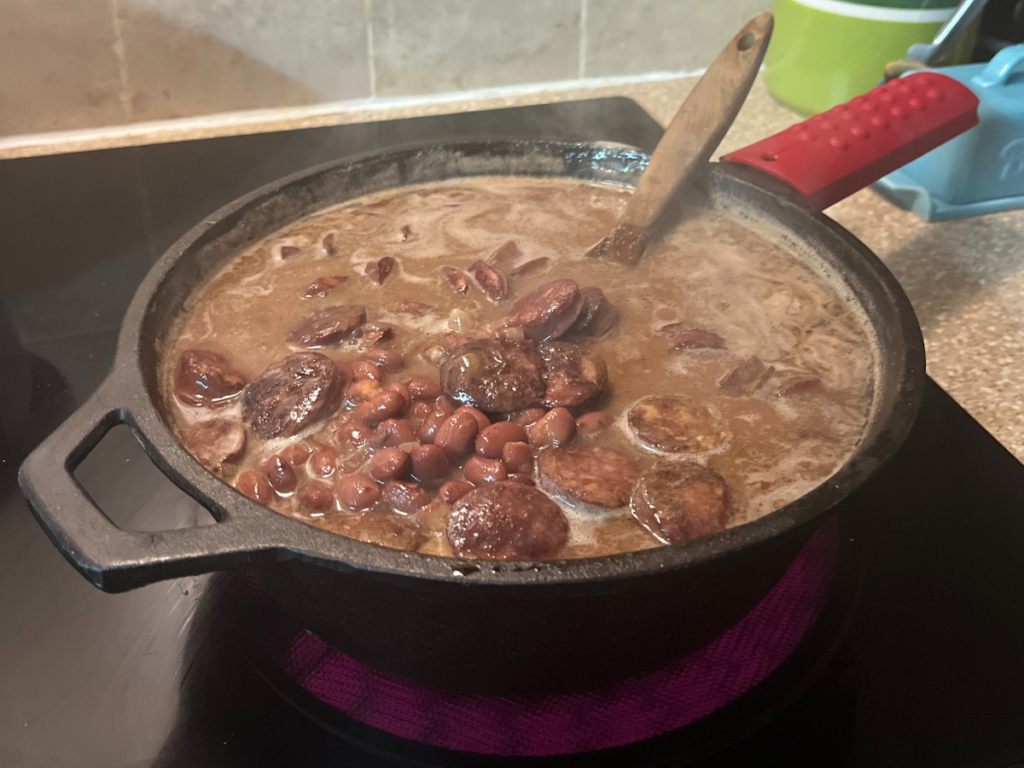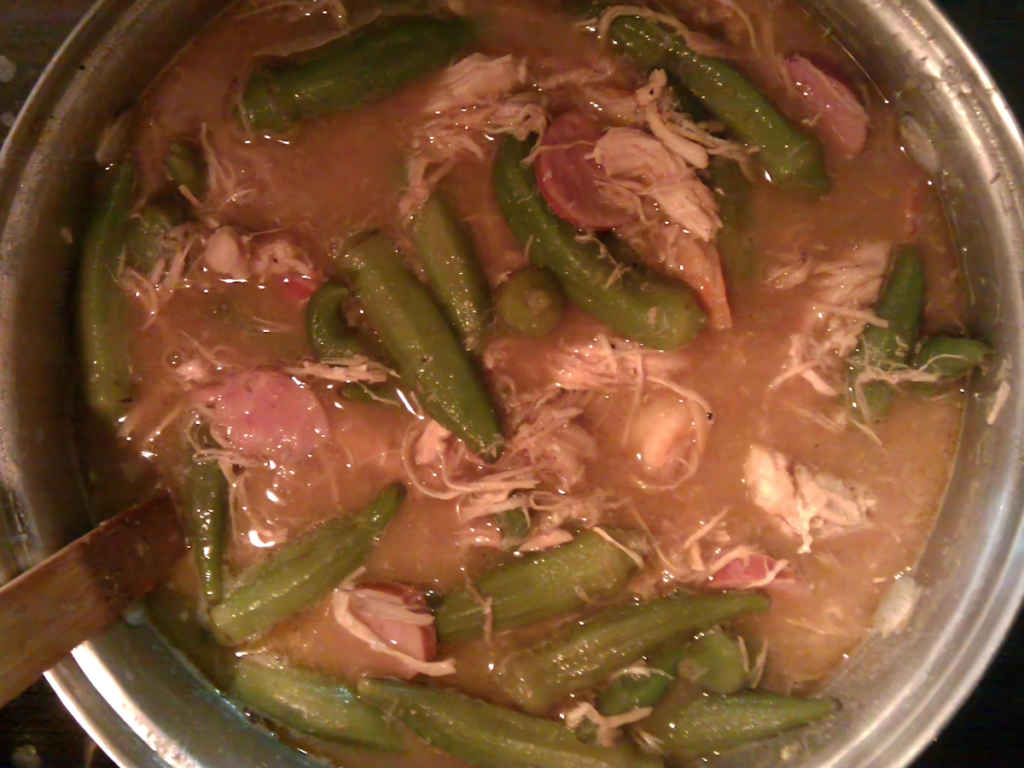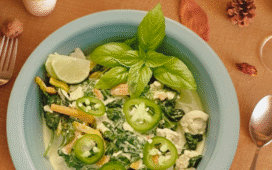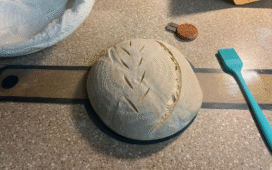Back in Fall of 2020, in case we needed a little extra chaos, Facebook discontinued the “notes” part of their service. This probably went largely unnoticed; unless like me, you had been storing all your original and tested recipes there for fifteen years. While there is no longer a notes link to be found anywhere, Facebook assures that you can still access your notes, through this link:
However, some photos and recipes are missing from my notes.. such as a crockpot brisket recipe that was such a hit, it received rave reviews from weird grandchild, Izzee, as the “best sandwich in the world”.
Also this was said in a tone that heavily suggested exclamation points.
This isn’t news, I have been complaining since it happened. And even though four years have passed, I don’t trust Facebook, and understand the second I get comfortable, they are going to delete it all to save five megabytes. So here I am as I have threatened for years, publishing all these recipes on the blog. But since I have a life (yes, I do, take that back!), I will be adding them in bite-sized chunks (if you will).
Today’s chunk is Cajun cuisine.
Making a Dark Roux
A really good roux will separate the novices from the experts, so you want to master a good roux.
It will take some time, but since most Cajun dishes start with a roux, you have ample opportunity.
- 3/4 : 1 ratio vegetable oil to flour
- Broth amount from your recipe
Crawfish Étouffée
I like a very dark roux and I make twice as much as most recipes call for, because I like a lot of it. I also use sweet peppers instead of bell peppers as they don’t get as mushy and I just like them better. If you just insist on eating mushy bell peppers though, go ahead and change that part of the recipe to suit your freakish cravings.
- 1/2 cup vegetable oil
- 1/2 cup self rising flour
- 4 tbsp Creole seasoning
- 3 – 4 cups crawfish or seafood stock
- 1 large onion, chopped
- 1/4 cup celery, finely chopped
- 3 sweet peppers, chopped
- 10 cloves garlic, minced
- 1 tbsp fresh thyme leaves, chopped
- 2 tsp celery seed
- 2 tsp Worcestershire Sauce
- Juice from 1/4 lemon
- 2 tbsp butter
- 1-1/2 to 2 lbs crawfish tail meat (with fat)
Optional Topping
- 1/2 cup green onions, thinly sliced
- 2 tbsp Italian parsley, chopped
- Louisiana hot sauce or Tobasco to taste
Sauté Your Veggies
Melt the butter in a medium sized skillet, add the onions, sweet pepper, celery, garlic and thyme, and sauté until onions are translucent. Turn off heat and set aside.
Make Your Dark Roux (see photo descriptions above)
In a large cast iron skillet (very important, don’t try this in teflon for the love of God, you’ll burn your house down!), heat your vegetable oil up slightly over med to med-high heat, then add your flour and Creole seasoning. If you are using your own mixture without salt, add a 1/2 tsp of salt or more to taste. If you are using Creole seasoning from the store, do not add any additional salt. Using a wooden spatula, stir your roux constantly to keep it from burning, allowing it to go past the normal cafe au lait or copper color to a darker color, almost chocolatey. It takes a few times to get your roux right where you want it, the first time you most likely won’t get it near dark enough. Don’t worry, each time you get braver, just remember, to stir constantly and don’t get popped, because it will hurt like hellfire! When your roux is the color you want, turn your heat down to low and add half the stock and stir in, then add half to all of the rest, depending on the gravy consistency you desire.
Stir in the sautéed veggies, celery seed, lemon juice, Worcestershire sauce, and finally crawfish tail meet and let cook on low for five to ten minutes.
Serve over cooked white long grain rice and garnish with toppings if preferred, and a wedge of buttered sourdough bread.
Knock-off Central Grocery Muffaletta
- 1/2 cup extra virgin olive oil
- 1/2 medium carrot, thinly sliced
- 1/2 rib celery, thinly sliced
- 1/2 cup finely chopped cauliflower
- 1/2 teaspoon dried oregano
- 1/4 teaspoon red pepper flakes
- 1/4 cup water
- 1 tablespoon red wine vinegar
- 1/2 cup pitted green olives, finely chopped
- 1/4 cup brine-cured pitted black olives, preferably kalamata, finely chopped
- 5 pepperoncini, stemmed and thinly sliced
- 2 jarred roasted pimento peppers, finely chopped
- Salt, to taste
- 1 – 6-inch-round Italian loaf with sesame seeds, split horizontally and hollowed out
- 4 ounces thinly sliced provolone
- 6 ounces thinly sliced mortadella
- 6 ounces thinly sliced hot sopressata
Prepare Relish
Combine the olive oil, carrot, celery, cauliflower, dried thyme, chili flakes and water in a small saucepan over medium-high heat and cook, until the vegetables are just tender, about 5 minutes. Transfer to a small bowl and add the vinegar, olives, pepperoncini and pimento peppers. Season with salt and mix together.
Assemble Sandwich
Divide the olive salad between the top half and bottom half of the bread. Layer the provolone, mortadella and hot sopressata on the bottom half of the bread, making sure none of the meat or cheese flares out over the sides of the bread. Carefully cover with the remaining top half of the bread and cover the entire sandwich in plastic wrap. Transfer it to a baking sheet or cutting board and weigh it down with a heavy item, such as a cast iron skillet or a large can of tomatoes, for at least 1 hour or up to overnight.
Brown Jambalaya
I use the Gautreau 1978 world championship chicken jambalaya recipe, with my own adjustments, to suit the preference of our family.
Chelle’s Adjustments:
- I add several different meats to my recipe instead of solely chicken. Decrease the amount of chicken and make up the difference of total meats/shell fish with whatever different meats/shell fish you like. I generally add (as available) shelled crawfish tails, shelled shrimp, oysters, ham and andouille (kielbasa or good smoked sausage will work if andouille isn’t available). I also boil my chickens until they are falling apart instead of frying them, which creates a stringed meat effect instead of chunked.
- Add any extra meat you plan to use when you are adding your veggies and shell fish at the very end. I also cut back on the green peppers to half and 1/3 tsp of cayenne.
- I also add chicken stock instead of water in my jambalaya.
Read the original recipe (below) all the way through before you attempt to make it and DO. NOT. STIR. !!!
1978 World Championship Chicken Jambalaya:
Here’s an award-winning recipe (along with some tips and some history of the dish) as prepared by: Matthew “Dee” Gautreau, Dee Gautreau’s Cajun Catering, Gonzales, Louisiana 70737, Telephone – (504) 644-5977 or 644-4405.
This makes damn good jambalaya, and is a brown-style rather than the red tomato-based jambalayas you see in New Orleans (like mine, for instance). This one doesn’t use a chicken stock because you make your own as you go along here.
- One 3 to 4 pound hen cut into serving pieces
3 cups long grain rice – uncooked - 1/4 cup cooking oil
3 medium white onions – chopped fine - 6 cups water (but Chuck says use chicken stock if you want it to be really good)
- 1 tablespoon salt, or to taste
- 2-1/2 teaspoons granulated garlic
- 1 cup green onions – chopped
- 1/2 cup green peppers
- 1/2 cup celery – chopped fine
- 1/4 teaspoon black pepper
- Red pepper to taste
- 2 tablespoons Louisiana hot sauce
Fry chicken in cooking oil until golden brown. Remove chicken and oil leaving just enough oil to cover bottom of pot. Add onions, and fry until golden brown. Put chicken back into pot with onions, and add 6 cups of water (note water level). Add remaining seasoning and simmer covered until chicken is tender. If necessary, add enough water to bring back to previous level.
Bring back to a rolling boil, and add rice. Simmer uncovered for about 15 minutes – turn rice. Cover with tight fitting lid, let steam for 15 minutes, or until rice is tender. Turn rice once more, and turn fire off. Let stand for 10 minutes and then serve.
Jambalaya is more tasty if highly seasoned, so don’t forget the red pepper. When adding salt, water should taste a little too salty, as rice absorbs considerable salt.
Yield: 6 to 8 generous servings.
Helpful Hints for Inexperienced Jambalaya Cooks:
Most jambalaya cooks prefer to cook in cast iron pots – whether cast iron or aluminum pot is used, it should be heavy enough to prevent easy burning, and have a tight lid.
To brown onions:
Onions and shortening are put into the pot, covered, and cooked over low heat until golden brown, stirring frequently. A little water added to the onions will help prevent sticking. Jambalaya should never be stirred – turn rather than stir after the rice has been added. This prevents the grains of rice from breaking up. Most cooks turn jambalaya only two or three times after the rice is added, being sure to scoop from the bottom of the pot to mix rice evenly with other ingredients.
A Little Jambalaya History:
Similar in many ways to Spanish paella, the term “jambalaya” is derived from the Spanish jamón for ham. Jambalaya found its way
into Creole cookery in the late 1700’s where it soon took on the flavor of added local ingredients.
It can be made (separately or all together) with ham, chicken, sausage, fresh pork, shrimp and oysters, to which is added shortening, rice, onion, garlic, pepper and other seasonings.
Starting with church fairs, which were the largest public gatherings at the turn of the century, Jambalaya emerged from small quantity indoor cooking to become the ideal dish for outdoor cooking over hardwood fire. Big black cast iron pots made preparation so easy and economical for church use that
Jambalaya was rapidly adapted for political rallies, weddings, family reunions and other affairs. No fair or political rally around Gonzales is complete without Jambalaya cooking.
The Jambalaya Festival and World Champion Jambalaya Cooking contest is held annually at Gonzales and attracts area cooks who have spent years perfecting the are of cooking and seasoning this Creole delicacy. Gonzales really is the Jambalaya Capital of The World.
About the Creator of the Championship Recipe:
“Dee” Gautreau is a World Champion Jambalaya cook; he won the title in 1978. He has his own catering business, “Dee Gautreau’s Cajun Catering.” In the past nine years he has cooked Jambalaya all over the United States and in France, too.
Red Beans and Rice
Before there were decorative, stackable, computerized, and talking washing machines and dryers, Monday was designated as laundry day. Because the laundry took all day, it also became red beans and rice night for the family. You could put the beans on the stove to cook low and slow all day without worrying about them, so this solution worked well for many Louisiana families, including ours. I can’t go too long without a batch of red beans and rice.
Red Beans
- 1 lb bag dry red beans
- 1 medium yellow onion, diced
- 2 cloves garlic, minced
- 1 lb andouille or kielbasa, sliced in rings
- 1 tbsp creole seasoning
- 1 tsp salt
I put all these ingredients in my 1970’s Rival green ceramic 3.5 quart crock pot, with enough water to cover plus three inches and let that cook on the lowest setting for about 8 hours (or overnight).
Roux
- 1/4 cup vegetable oil
- 1/3 cup flour
- 1/2 tbsp creole seasoning
- 1 cup of water
In my big cast iron Dutch oven frying pan (see photo below), at medium high on the stove top, I combine all ingredients except for the water, to make a roux, while stirring madly (see the top of this page for the procedure on how to make a dark roux). When my ingredients reach a nearly chocolate color, I turn the heat down to low, and carefully pour in my water, still stirring.
Then I pour in my beans from the crock pot, and bring it all back up to a boil. Then I turn it back down to low, cooking for 20-40 minutes. Serve over rice and top with grated cheddar, chopped green onions and Louisiana hot sauce.
Rice
- 2 cups long grain white rice
- 3 cups water
- 2 tsp salt
Put all ingredients in a medium sized sauce pan with a lid, and bring to a good boil. Turn down immediately to low and cover with a lid to cook 10-15 minutes. DO. NOT. STIR. EVER.
Chicken and Seafood Gumbo
I make enough gumbo to feed an army then freeze what is left over to feed the other side, later. So you are gonna need a big heavy bottom stock pot (boiler) and I make my roux in a small cast iron Dutch oven. The cast iron holds the heat just right for making a roux and anything else comes up short in comparison.
- 1 large white or yellow onion chopped
- 1 to 2 whole chickens either uncooked or see my instructions for using cooked chickens
- 1 to 2 lbs. andouille or keilbasa
- 1 to 2 lbs. shelled, deveined large shrimp
- 4 tablespoons creole seasoning (*see recipe at the bottom to make your own creole seasoning)
- 1 tablespoons (or less if using cooked chickens) salt
- 2 bags or 4 cups of frozen okra
- 1 cup all purpose flour
- 1 cup vegetable/canola oil
- 2 tablespoons vegetable/canola oil
- If using cooked chickens: 6 cups of broth or add enough chicken base to your water to make it your broth (preferred)
- Serve sprinkled with Louisiana hot sauce over cooked rice (cooked separately) with sour dough bread or sour dough cornbread
Gumbo – Stock Pot
In your stock pot with a couple of tablespoons of oil, stir fry a large chopped white or yellow onion until tender (add celery and carrots if you like, I don’t). Then add enough water to cover your birds plus an inch, and salt to your taste for chicken (roughly a tablespoon is what I use) and boil 1 or 2 fryers (depending on how much chicken you want in your gumbo – I use one whole chicken and whatever loose chicken is hanging out in the freezer). I sometimes bypass this step altogether by buying rotisserie cooked chickens around 8 p.m. for half price from the deli at the grocery store, then debone/deskin the cooked birds. If you go this route, you will need to use less salt and add chicken broth (I prefer to use chicken base in water.. either way you will end up with about 10 cups of broth). Cook on high till boiling then medium high until the uncooked chicken is falling off the bone or stringy or about 30 minutes for the cooked deli chicken. If you cooked it yourself, keep the broth (I drain the fat off my broth with a separator, and let the chicken cool till you can remove all bones, skin, and gristle from it – then add the broth and chicken back to your pot returning to medium low heat). Add 1 to 2 pounds of sausage (I prefer andouille or kielbasa, as I am not fond of the smoke flavor in smoked sausage. However, I am always down for good smoked sausage made in Louisiana – NOT HILLSHIRE FARMS), sliced in rings. Let everything cook in the stock pot on medium low heat while you make your roux.
Roux – Cast Iron Dutch Oven
In your Dutch oven, stir up 1 cup of cooking oil and 1 cup of all purpose flour along with 3 tablespoons of creole seasoning, either a can you bought or you can mix some up from the recipe I am posting separately. With a wooden spoon you will hold vigil, letting nothing deter you from making the most perfect roux in the world. You can’t let it stick, you have to stir constantly. I cook mine on high so it will brown faster, but I am stirring like the wind so it doesn’t stick. You want to also do this in a Dutch oven so it doesn’t pop on you because it burns like fire if it gets on you. Brown your roux until it is nearly burnt, but not.. brown enough to be the color of café au lait. You will get better at this as you make it.. no one comes out of the womb making a perfect roux. When it has reached the right color, with thick layers of pot holders and keeping as much of your body clear from the stock pot as you can (think science experiment with explosive ingredients) pour your roux into your stock pot and stir it all in.
Gumbo – Stock Pot
Adding your roux should have made everything nice and thick-ish and brown-ish. Add another tablespoon of creole seasoning to the stock pot for good measure and let it cook for about thirty minutes at least. You can cook it at this point all day if you like, because it only gets better the longer it cooks.. but after thirty minutes cook it on low or simmer.
Add two bags (about 4 cups) of small, (3 to 4 inches) tender, frozen whole okra.. if you don’t like okra in your gumbo, you have lost your mind. 😉 Okra is gumbo! But if you really are set against it, you can make file’ gumbo. File’ will act as a thickening agent since you won’t have the yummy thickening goodness of okra in your gumbo. Without gumbo you will add about a teaspoon ground file’ but only at the very end or your gumbo will end up stringy. However, if you added okra like a good Cajun (aieee!), you will let it cook for about 20 minutes, then your peeled, deveined shrimp (and crawfish tails if you like them and they are in season). You want to add your shellfish last so it doesn’t get rubbery and you will only cook it about five minutes or less before serving – or refrigerating.. gumbo is always better the next day after the flavors have had all night to get to know each other.
Serve over white rice with Louisiana hot sauce and sour dough bread or my sour dough corn bread.
Cajun Seasoning vs. Creole Seasoning
I prefer Creole seasoning over Cajun because it has a few more ingredients (basil, celery seed and white pepper).. but they’re really too similar to notice much difference. I like to mix my own and keep it in a small lidded container in my spice cabinet, as premixes tend to be a little over-salted.
Cajun
- 2 tablespoons paprika
- 1 tablespoon salt
- 1 tablespoon black pepper
- 2 teaspoons garlic powder
- 2 teaspoons onion powder
- 2 teaspoons ground red pepper
- 1 teaspoon dried oregano
- 1 teaspoon dried thyme
Creole
- 2 tablespoons onion powder
- 2 tablespoons garlic powder
- 2 tablespoons dried oregano leaves
- 2 tablespoons dried sweet basil
- 1 tablespoon dried thyme leaves
- 1 tablespoon black pepper
- 1 tablespoon white pepper
- 1 tablespoon cayenne pepper
- 1 tablespoon celery seed
- 5 tablespoons sweet paprika
Sourdough Cornbread
It isn’t really sourdough but it tastes like sourdough, hence the name. This is my own recipe and I can’t believe I am publishing it. It’s gooood.. my husband says it’s better than his grandmother’s and if you knew the regard he had for his grandmother’s cornbread, your jaw would drop!
- 1/3 cup flour
- 3/4 cup white self-rising cornmeal
- tbsp baking powder
- dash salt
- 1 egg
- 1 cup sour cream
- 1-1/2 cups of buttermilk roughly.. enough to make it almost the consistency of pancake batter, but not quite
First thing you do before anything else, is put about a tbsp of cooking oil in a cast iron skillet and preheat your oven to 420 degrees. The idea is to get the oil and skillet hot enough so that it sizzles when you pour your batter in. When it is preheated or near to, start your batter.
Mix all your ingredients together in the order listed, mixing together till well blended but not overmixing. Pour it in your skillet scraping the sides of your bowl with a spatula to get it all in the skillet. Bake for 20 minutes or until slightly browned on the top.
Remove from oven, slice and butter. If you use margarine, God kills a kitten!
This is great served with red beans and rice. Or add 1/2 cup of jalapeno rings and a slight splosh of jalapeno juice to your batter and serve with chili.
Shrimp & Grits
- 4 cups cooked grits
- 4 tablespoons butter
- 2 cups shredded sharp cheddar cheese
- 1 pound shrimp, peeled and deveined
- 1 pound thick cut bacon, drained and chopped
- 4 teaspoons fresh lemon juice
- 2 tablespoons chopped parsley
- 1 cup thinly sliced scallions
- 3 large cloves garlic, minced
Prepare grits as directed by packaging (I replace half of the water with half and half or whipping cream) to make four cups of cooked grits. Remove from heat and stir in butter and cheese. Clean and strained shrimp dry while frying bacon in a large skillet till brown, moving to a paper towel to drain. Remove all but two tablespoons of the bacon grease from the skillet then add shrimp, cooking until they turn pink. Add lemon juice, chopped bacon, parsley, scallions and garlic and saute for 3 minutes.
Spoon grits into a serving bowl. Add shrimp mixture and mix well.

